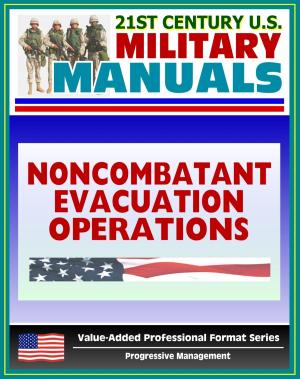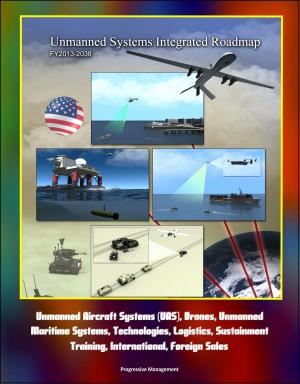Stability Economics: The Economic Foundations of Security in Post-conflict Environments - Iraq and Afghanistan, Shari'a Compliant Finance, Odierno, Petraeus, Shining Path Guerrillas
Nonfiction, History, Military| Author: | Progressive Management | ISBN: | 9781311985835 |
| Publisher: | Progressive Management | Publication: | April 8, 2014 |
| Imprint: | Smashwords Edition | Language: | English |
| Author: | Progressive Management |
| ISBN: | 9781311985835 |
| Publisher: | Progressive Management |
| Publication: | April 8, 2014 |
| Imprint: | Smashwords Edition |
| Language: | English |
In the years after invading Iraq and Afghanistan, the US military realized that it had a problem: How does a military force set the economic conditions for security success? This problem was certainly not novel—the military had confronted it before in such diverse locations as Grenada, Haiti, Bosnia, and Kosovo. The scale and complexity of the problem, however, were unlike anything military planners had confronted beforehand. This was especially the case in Iraq, where some commentators expected oil production to drive reconstruction. When the fragile state of Iraq's infrastructure and a rapidly deteriorating security situation prevented this from happening, the problem became even more vexing: Should a military force focus on security first, or the economy? How can it do both? This is the challenge of Stability Economics.
One answer to this problem in Iraq was the Commander's Emergency Response Program (CERP) and using money as a weapon system. The notion was that commanders could target funding at projects that would contribute to improvements in the economy and the security situation simultaneously. Beyond sparking an ongoing debate about CERP effectiveness, the evolution of money as a weapon system occurred under the shadow of a larger debate over whether the US military should prepare the future force for population-centric counterinsurgency operations or for large-unit combined arms maneuver operations. A force prepared for population-centric counterinsurgency would presumably also be better positioned to set the economic conditions for security success in a post-conflict environment. In very general terms, what one observer playfully called COINdinistas would favor the building of military doctrine and competencies to prepare the force to build economies in the future, the expectation being that facing such challenges are inevitable for the US military. Thus, the debate over how good the military should be at economic development influenced and was influenced by the debate over force structure and the character of future warfare.
Entrepreneurial Expeditionary Economics and the United States Military Right Task, Wrong Tool? * Expeditionary Economics and Its Implications on the United States Army * Expeditionary Economics in Turbulent Times * Comparing Models for the Restoration of Essential Services during Counterinsurgency Operations * Shari'a Compliant Finance - The Overlooked Element for Developing an Effective Financial System in Afghanistan
In the years after invading Iraq and Afghanistan, the US military realized that it had a problem: How does a military force set the economic conditions for security success? This problem was certainly not novel—the military had confronted it before in such diverse locations as Grenada, Haiti, Bosnia, and Kosovo. The scale and complexity of the problem, however, were unlike anything military planners had confronted beforehand. This was especially the case in Iraq, where some commentators expected oil production to drive reconstruction. When the fragile state of Iraq's infrastructure and a rapidly deteriorating security situation prevented this from happening, the problem became even more vexing: Should a military force focus on security first, or the economy? How can it do both? This is the challenge of Stability Economics.
One answer to this problem in Iraq was the Commander's Emergency Response Program (CERP) and using money as a weapon system. The notion was that commanders could target funding at projects that would contribute to improvements in the economy and the security situation simultaneously. Beyond sparking an ongoing debate about CERP effectiveness, the evolution of money as a weapon system occurred under the shadow of a larger debate over whether the US military should prepare the future force for population-centric counterinsurgency operations or for large-unit combined arms maneuver operations. A force prepared for population-centric counterinsurgency would presumably also be better positioned to set the economic conditions for security success in a post-conflict environment. In very general terms, what one observer playfully called COINdinistas would favor the building of military doctrine and competencies to prepare the force to build economies in the future, the expectation being that facing such challenges are inevitable for the US military. Thus, the debate over how good the military should be at economic development influenced and was influenced by the debate over force structure and the character of future warfare.
Entrepreneurial Expeditionary Economics and the United States Military Right Task, Wrong Tool? * Expeditionary Economics and Its Implications on the United States Army * Expeditionary Economics in Turbulent Times * Comparing Models for the Restoration of Essential Services during Counterinsurgency Operations * Shari'a Compliant Finance - The Overlooked Element for Developing an Effective Financial System in Afghanistan















